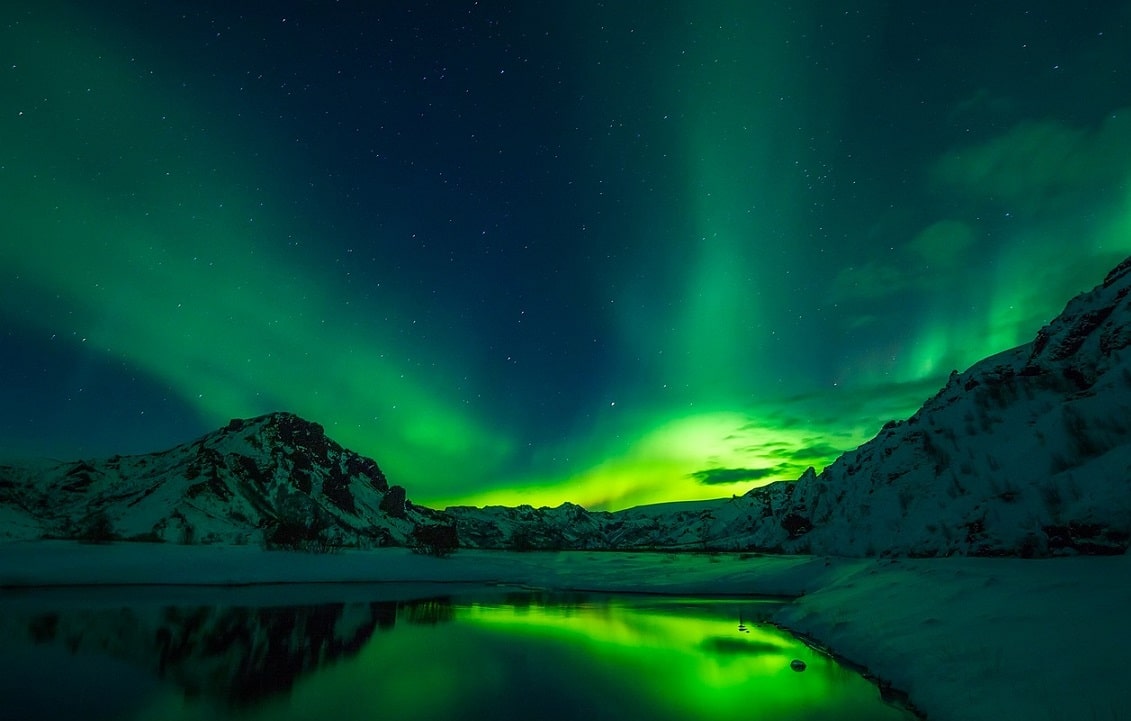Iceland offers a mesmerizing array of natural wonders and cultural attractions, making it a bucket-list destination for travelers worldwide. From the enchanting Blue Lagoon’s geothermal waters to the geological marvels of the Golden Circle, including Þingvellir National Park, Geysir Geothermal Area, and Gullfoss Waterfall, there’s no shortage of awe-inspiring sights. The capital city, Reykjavik, blends contemporary charm with historical landmarks like Hallgrímskirkja Church, while the rugged landscapes of the Snæfellsnes Peninsula and the Westfjords beckon adventurers with their untamed beauty. Whether marveling at the Northern Lights, exploring the remote Highlands, or encountering majestic wildlife in places like Myvatn and Húsavík, Iceland promises an unforgettable journey through its diverse and breathtaking landscapes.
Read more – Top Travel Destinations.
List of Places to Visit in Iceland
Iceland is a stunning country with a diverse array of natural wonders and attractions. Here are some must-visit places in Iceland:
- The Blue Lagoon: A geothermal spa located in a lava field in Grindavík. It’s known for its milky-blue waters rich in minerals, which are believed to have healing properties.
- The Golden Circle: A popular tourist route in southern Iceland, featuring three primary stops:
- Þingvellir National Park: A UNESCO World Heritage Site where you can walk between the Eurasian and North American tectonic plates.
- Geysir Geothermal Area: Home to the geyser Strokkur, which erupts approximately every 5-10 minutes.
- Gullfoss Waterfall: A powerful two-tiered waterfall on the Hvítá River.
- Reykjavik: Iceland’s capital and largest city, offering a mix of culture, history, and vibrant nightlife. Don’t miss landmarks such as Hallgrímskirkja Church and Harpa Concert Hall.
- Seljalandsfoss and Skógafoss Waterfalls: Two of Iceland’s most iconic waterfalls located along the south coast. Seljalandsfoss is known for the ability to walk behind it, while Skógafoss is renowned for its powerful cascade.
- Vatnajökull National Park: The largest national park in Europe, encompassing glaciers, volcanoes, and diverse landscapes. Highlights include the Jökulsárlón Glacier Lagoon and Skaftafell Nature Reserve.
- Snæfellsnes Peninsula: Often referred to as “Iceland in miniature” due to its diverse range of landscapes, including volcanic peaks, lava fields, coastal cliffs, and black sand beaches. Don’t miss Snæfellsjökull National Park, home to the iconic Snæfellsjökull volcano.
- The Northern Lights: Iceland is one of the best places on earth to witness the aurora borealis, especially during the winter months when the nights are longer and darker.
- Landmannalaugar: A stunning geothermal area in the Icelandic Highlands known for its colorful rhyolite mountains, hot springs, and hiking trails.
- Reynisfjara Black Sand Beach: Located near the village of Vík í Mýrdal on Iceland’s south coast, this dramatic beach features black sand, basalt columns, and towering sea stacks.
- Húsavík: Known as the whale-watching capital of Iceland, Húsavík offers opportunities to see various species of whales, including humpback whales and blue whales, in their natural habitat.
- Dettifoss: Located in Vatnajökull National Park, Dettifoss is Europe’s most powerful waterfall, known for its thundering cascade and immense power.
- Myvatn: A stunning lake region in northern Iceland known for its geothermal activity, unique geological formations, and abundant birdlife. Highlights include the pseudo-craters at Skútustaðir and the geothermal area of Námaskarð.
- The Westfjords: A remote and rugged region in northwest Iceland, characterized by towering cliffs, deep fjords, and picturesque fishing villages. It offers opportunities for hiking, birdwatching, and exploring off-the-beaten-path landscapes.
- Hornstrandir Nature Reserve: Located in the Westfjords, Hornstrandir is a remote and pristine wilderness area known for its dramatic coastal cliffs, Arctic foxes, and untouched landscapes. It’s popular for multi-day hiking trips and wilderness camping.
- Reykjanes Peninsula: Just a short drive from Reykjavik, the Reykjanes Peninsula is known for its geothermal areas, lava fields, and rugged coastline. Don’t miss the geothermal area of Gunnuhver and the dramatic cliffs of Reykjanesviti.
- The Highlands: Iceland’s interior Highlands offer some of the country’s most remote and untouched landscapes, including vast lava fields, colorful mountains, and hidden hot springs. Accessible primarily by rugged 4×4 vehicles, the Highlands are perfect for adventurous travelers seeking solitude and wilderness.
- Snæfellsjökull National Park: Home to the iconic Snæfellsjökull volcano, this national park on the Snæfellsnes Peninsula offers diverse landscapes, including lava fields, coastal cliffs, and pristine beaches. It’s also believed to be one of Earth’s spiritual energy centers.
- Hveravellir: A geothermal oasis located in the Highlands between the glaciers Langjökull and Hofsjökull. It features hot springs, bubbling mud pots, and colorful geothermal areas, making it a popular stop for travelers exploring the interior.
- Grimsey Island: Located in the Arctic Circle, Grimsey Island is known for its stunning coastal cliffs and abundant birdlife, including puffins. It’s a unique destination for those seeking a remote and off-the-beaten-path experience.
- The East Fjords: Offering some of Iceland’s most dramatic coastal scenery, the East Fjords are characterized by towering mountains, narrow fjords, and charming fishing villages. It’s a paradise for outdoor enthusiasts, with opportunities for hiking, kayaking, and wildlife watching.
Explore the list of Places to Visit Near Me.
These are just a few highlights, but Iceland offers countless other natural wonders and hidden gems waiting to be explored. Whether you’re interested in geology, wildlife, or simply breathtaking landscapes, Iceland has something for everyone.










